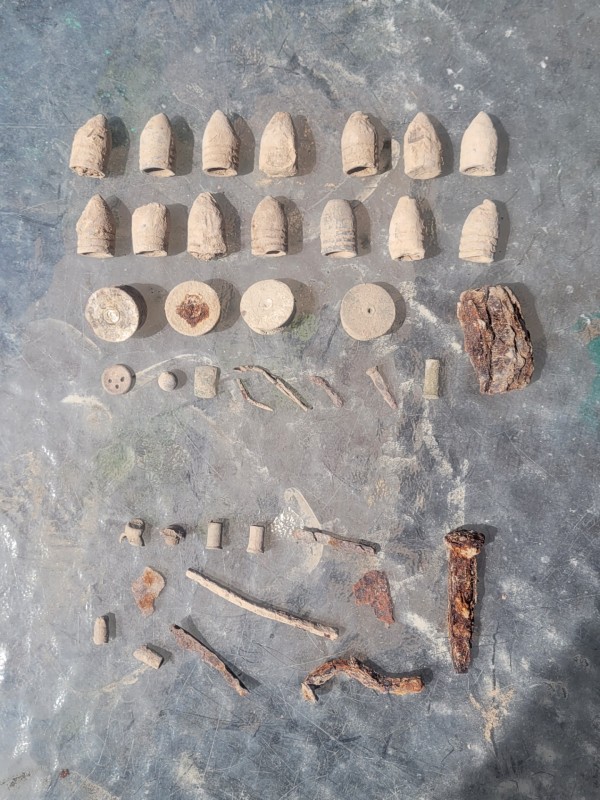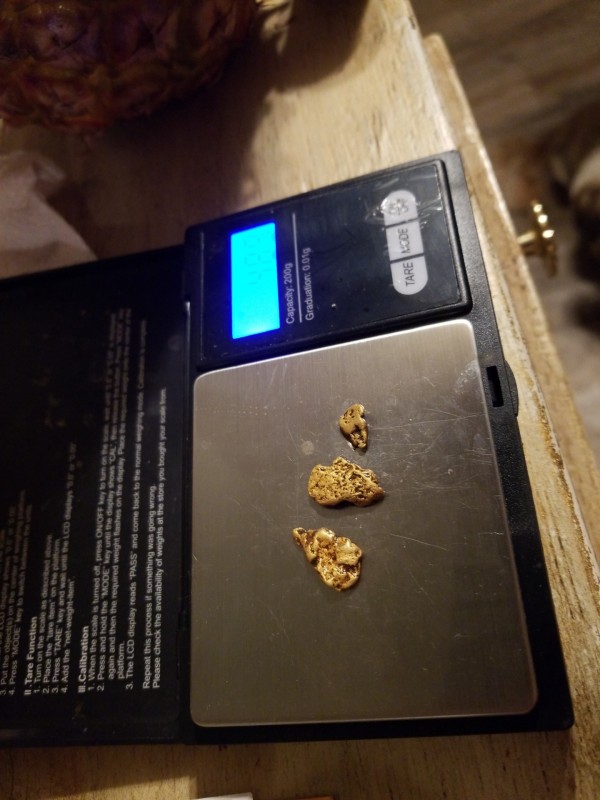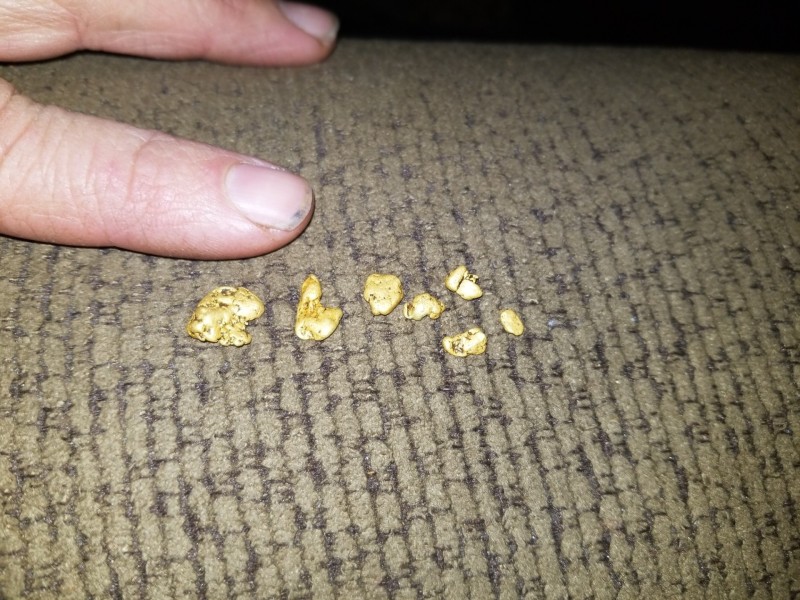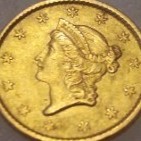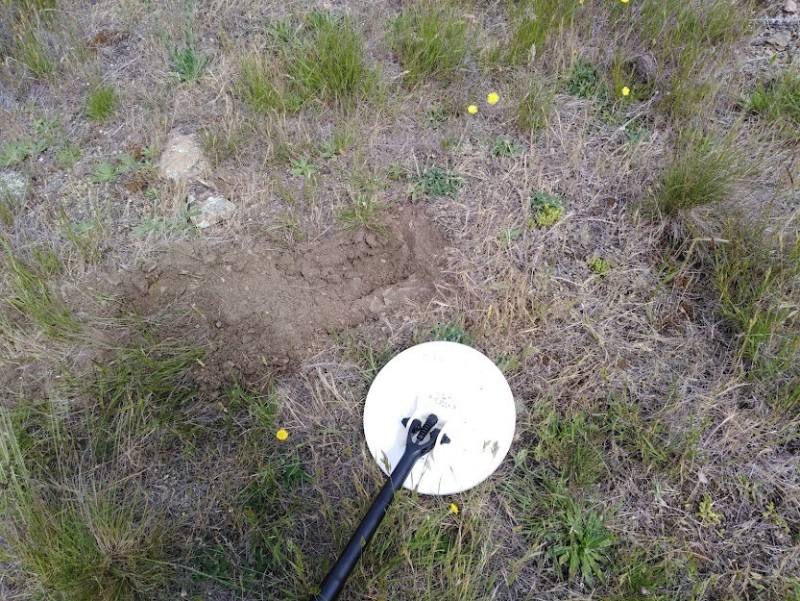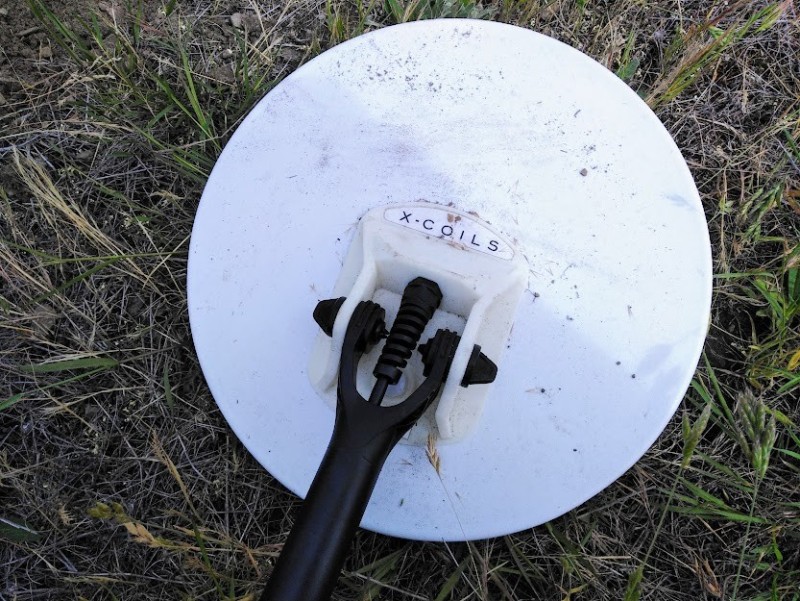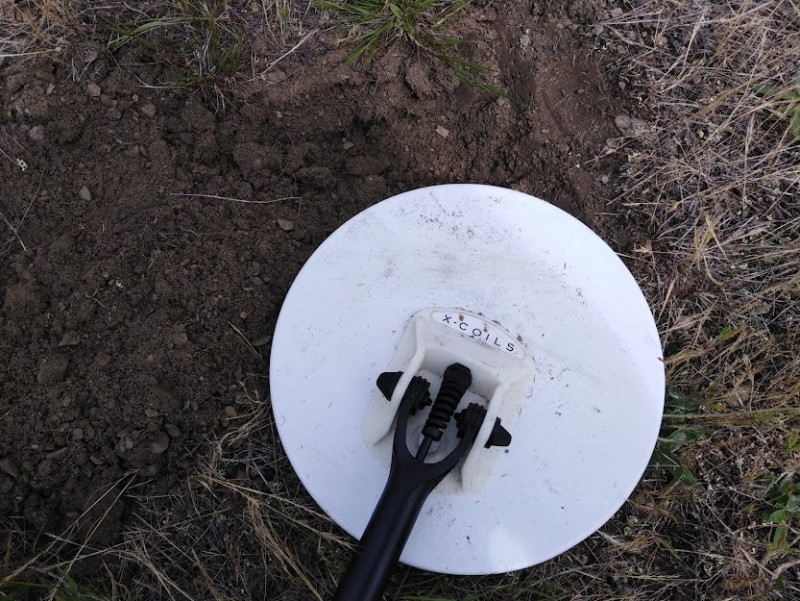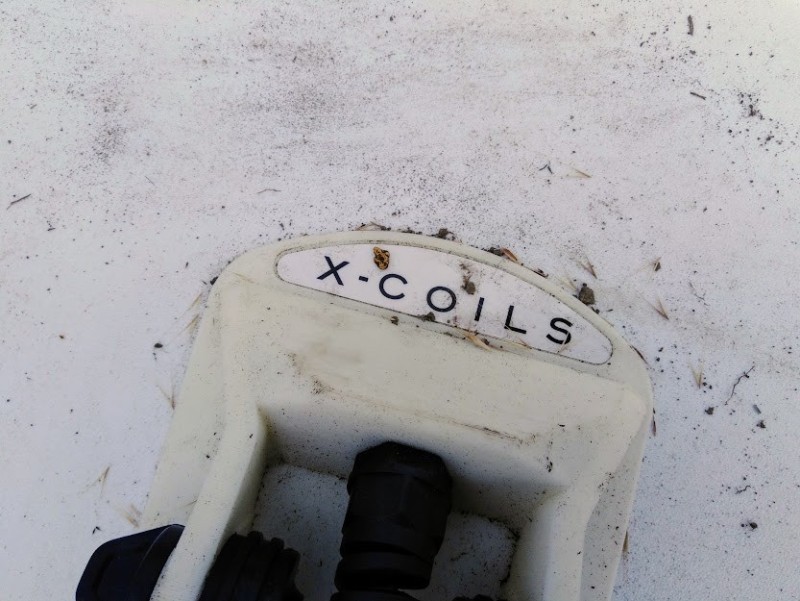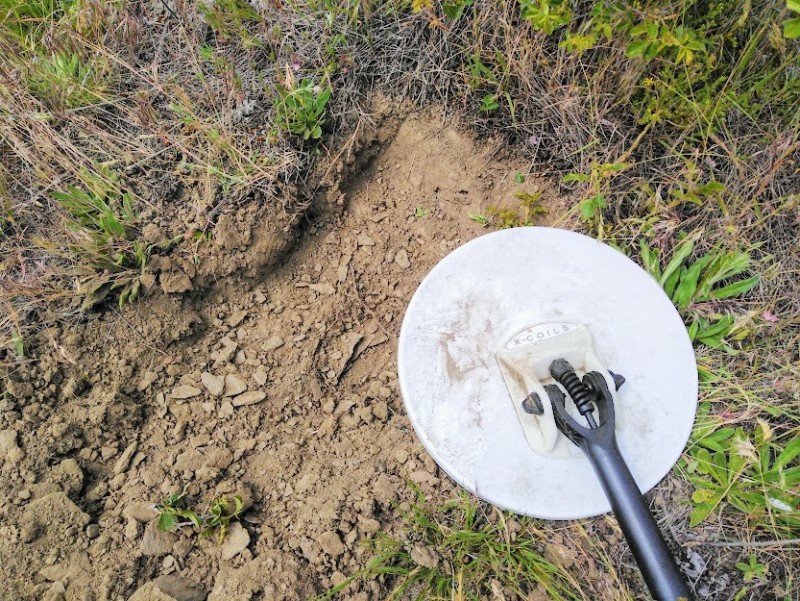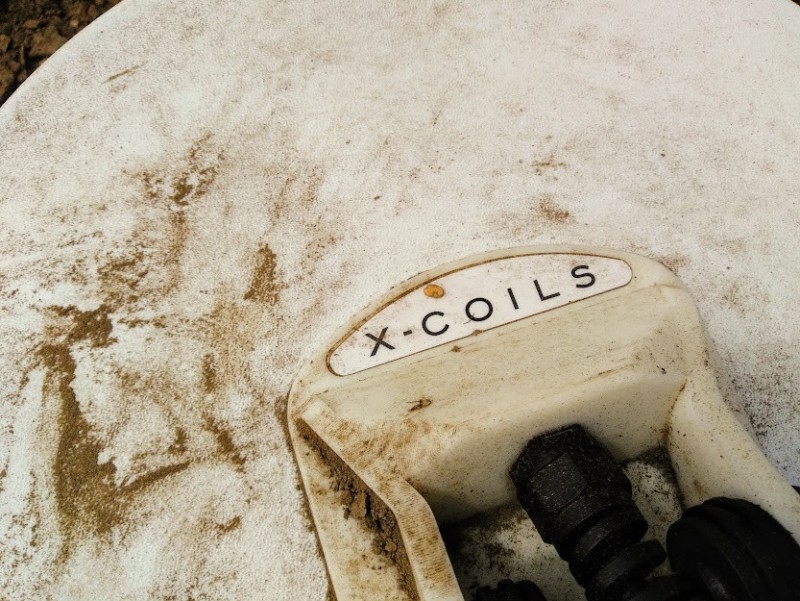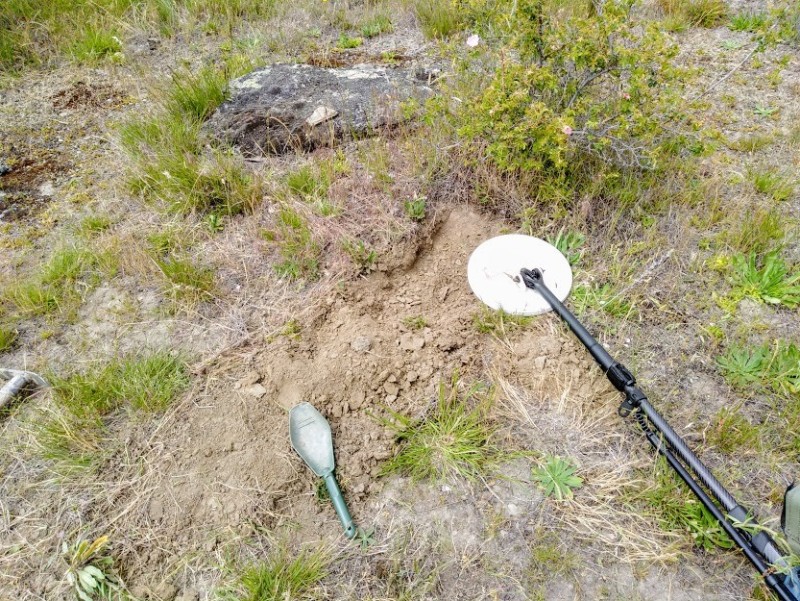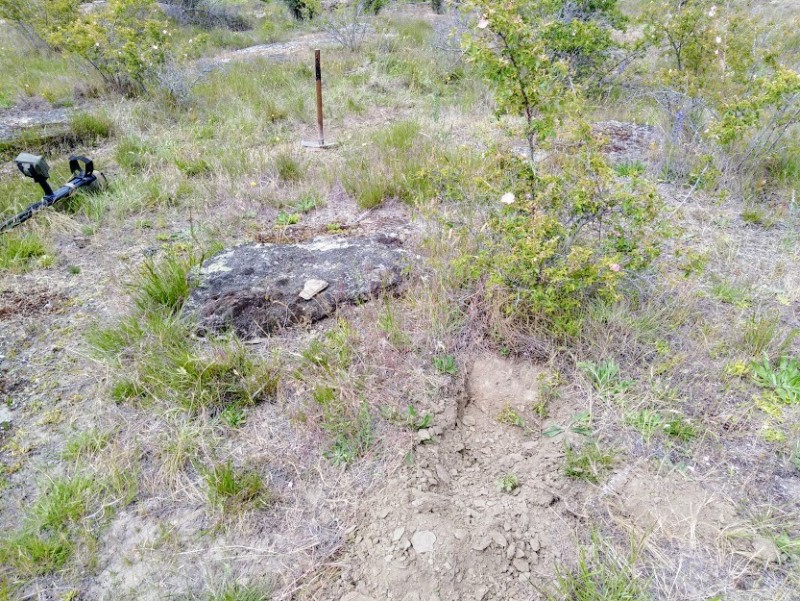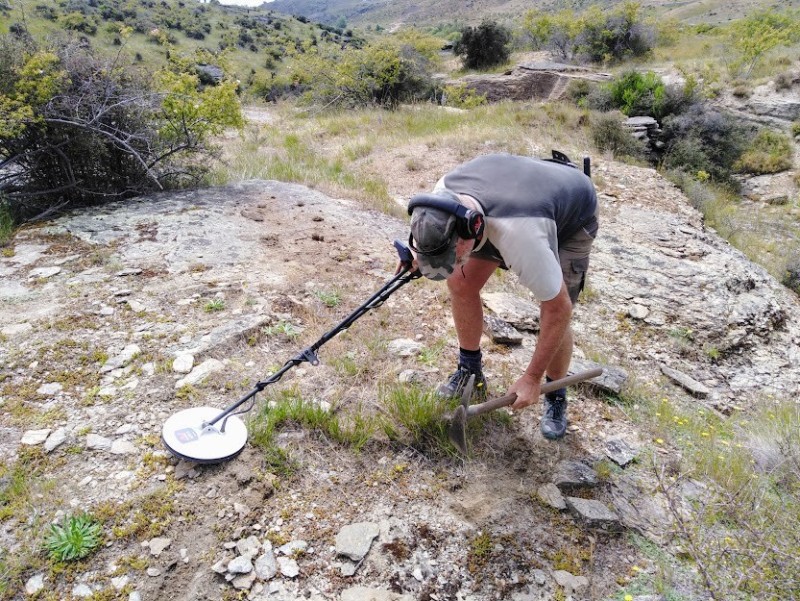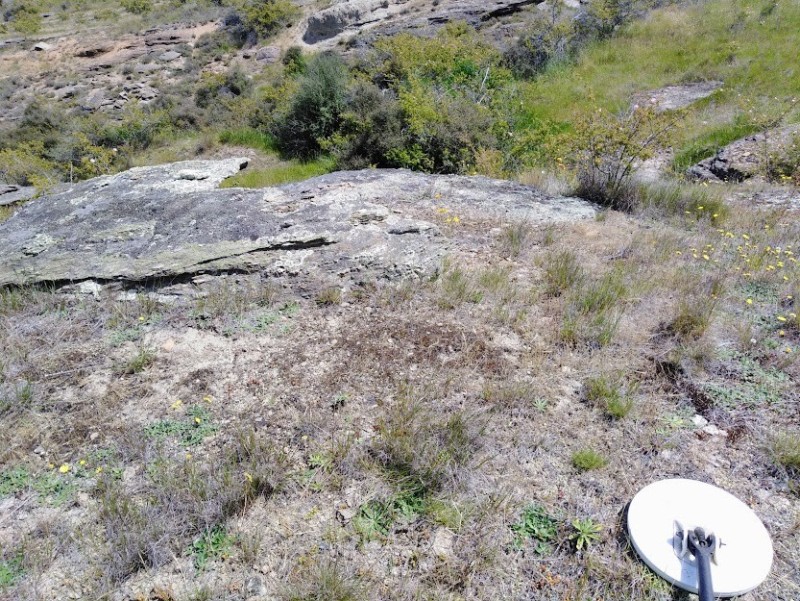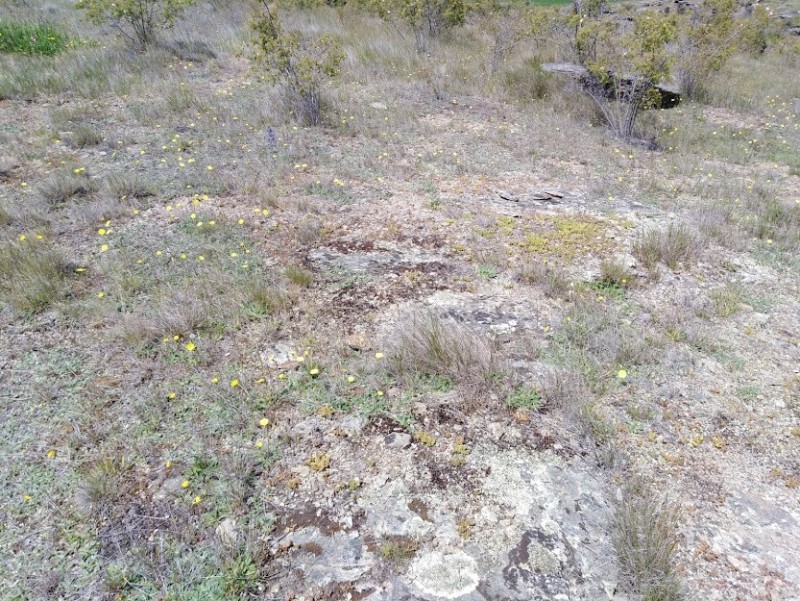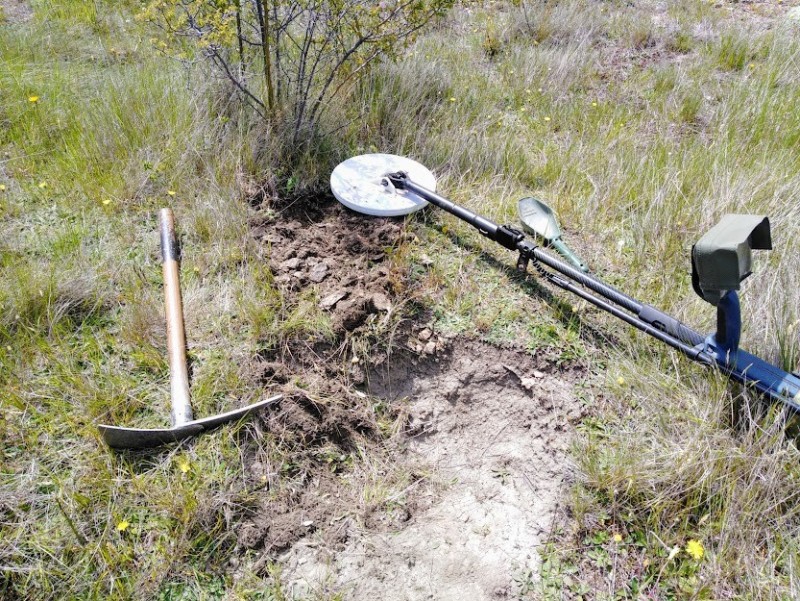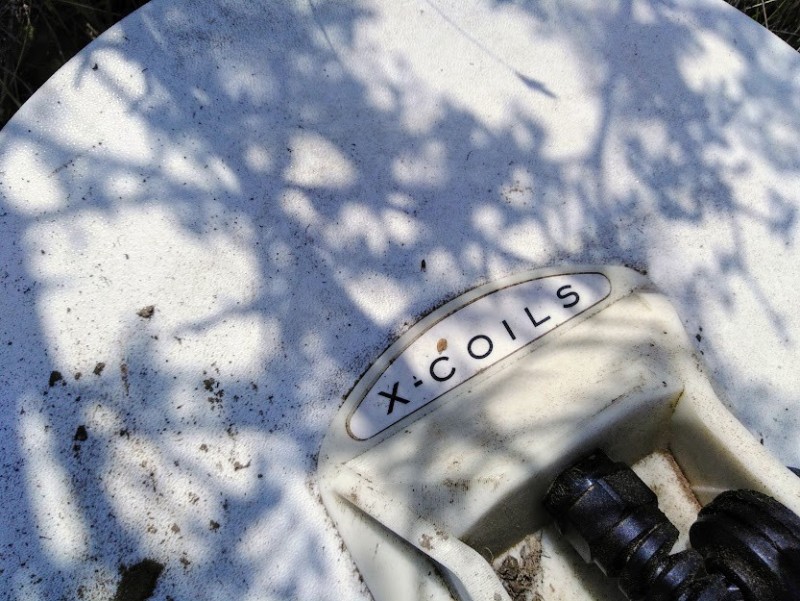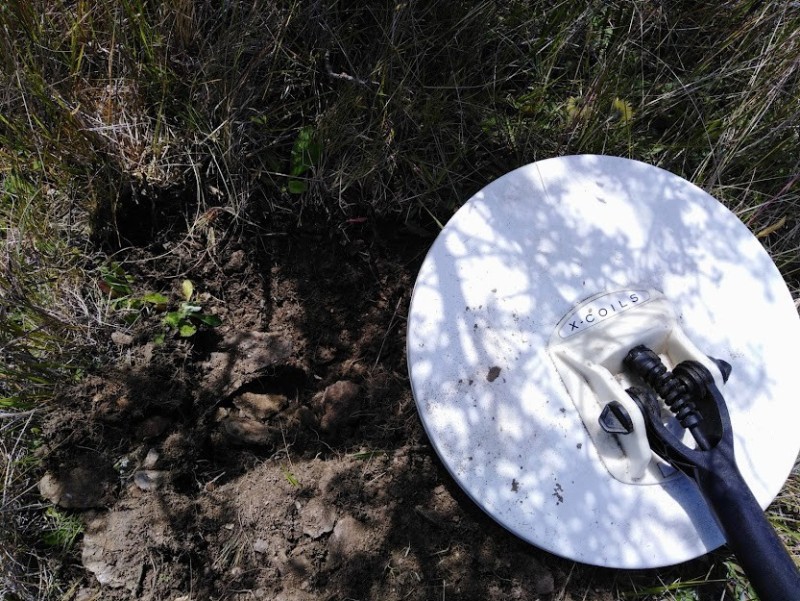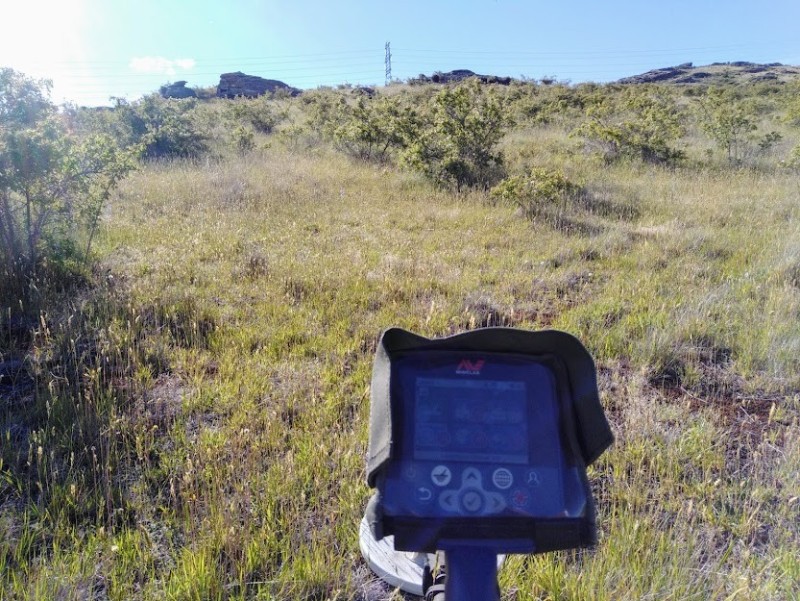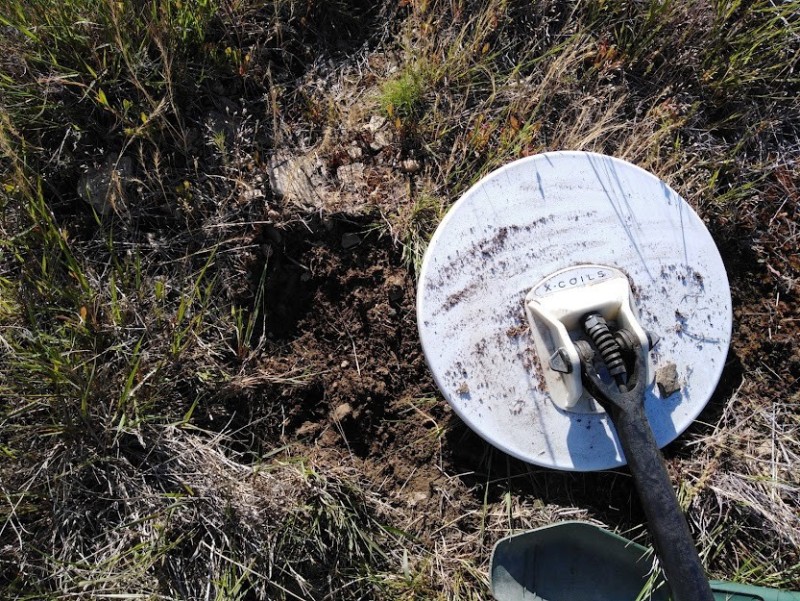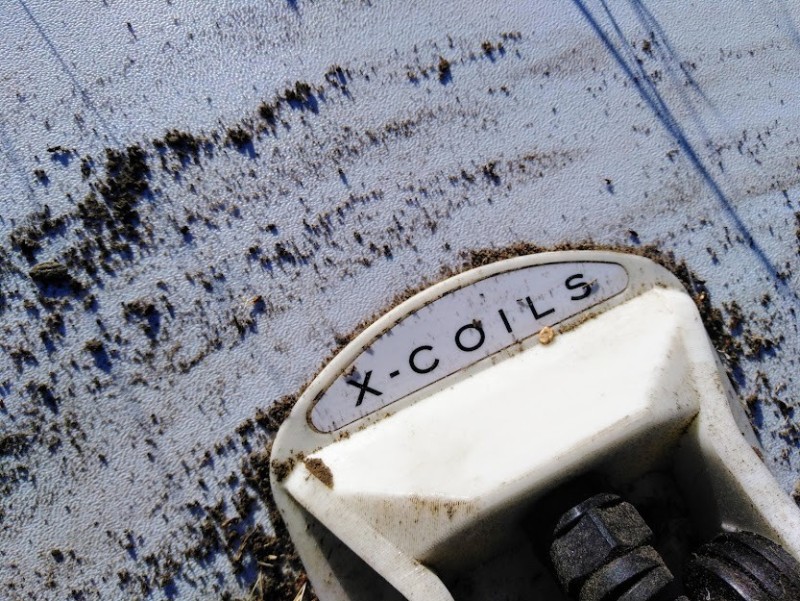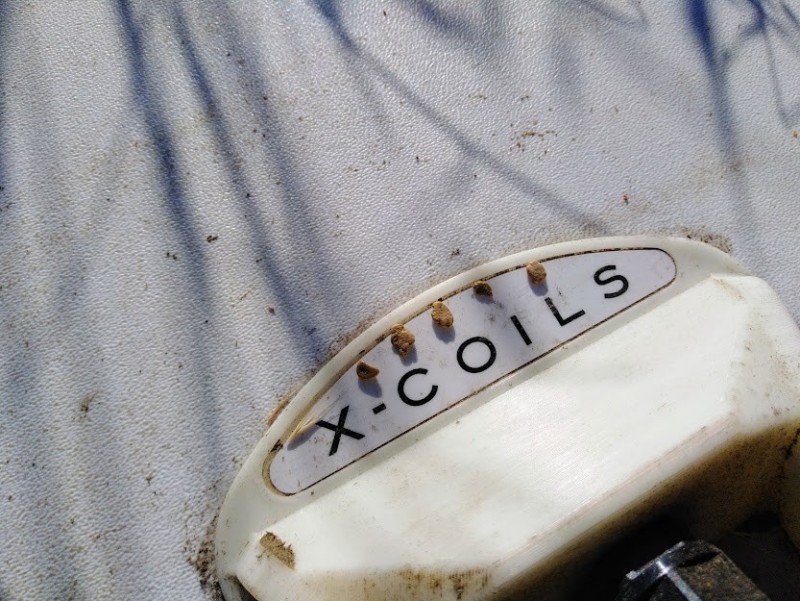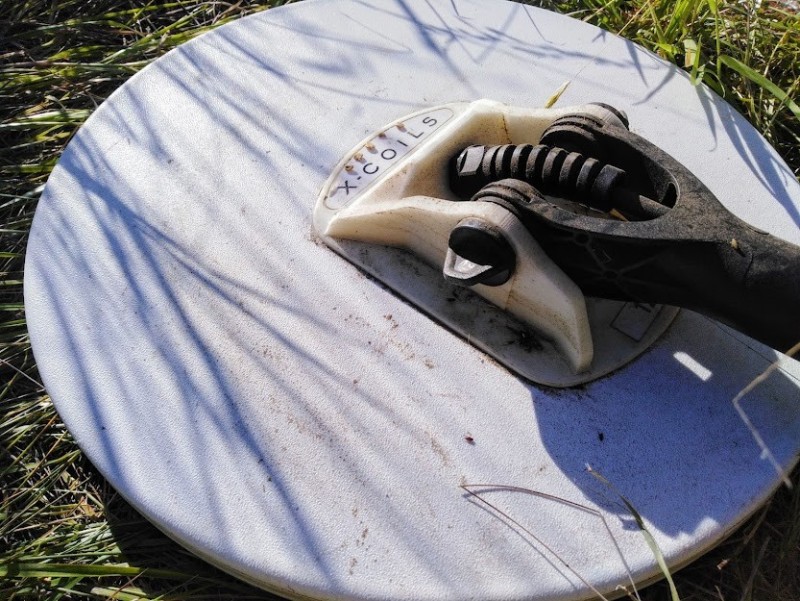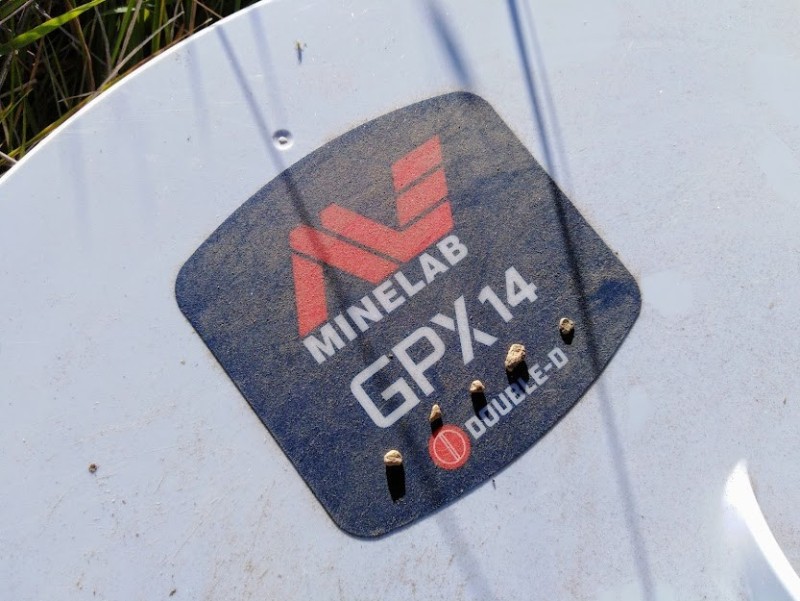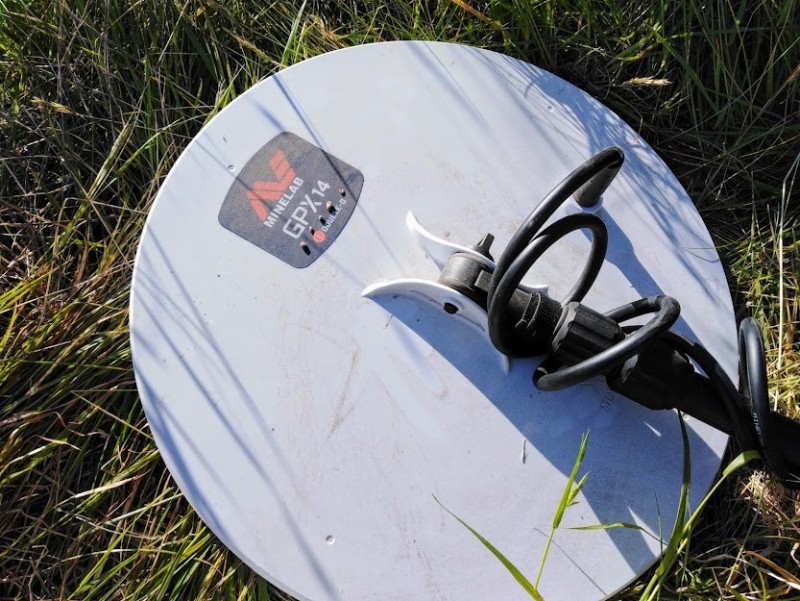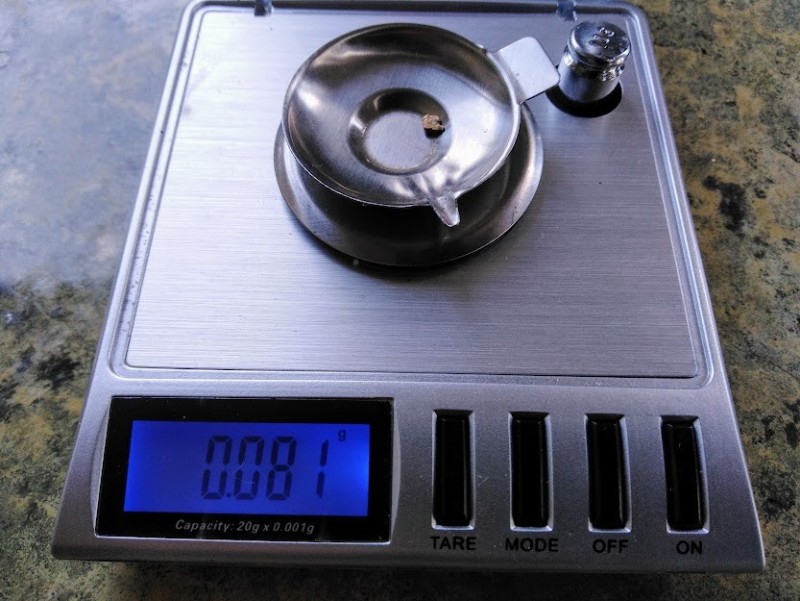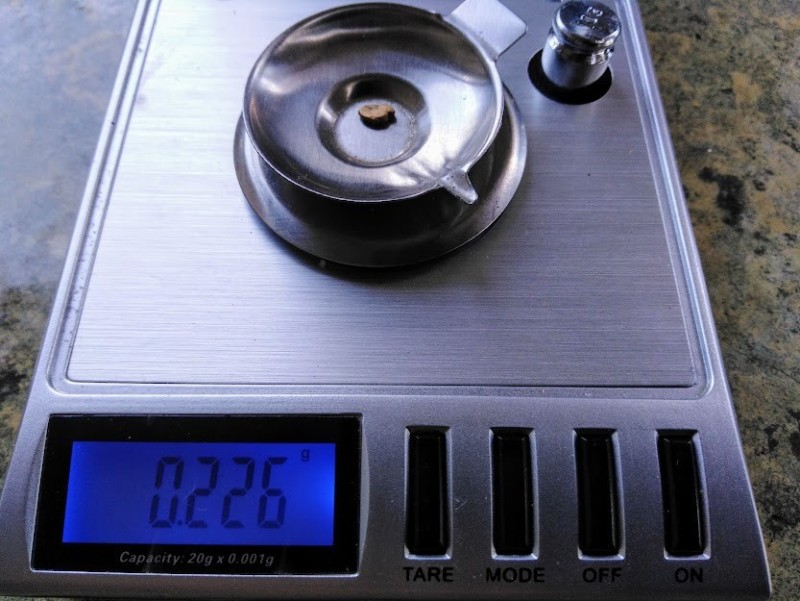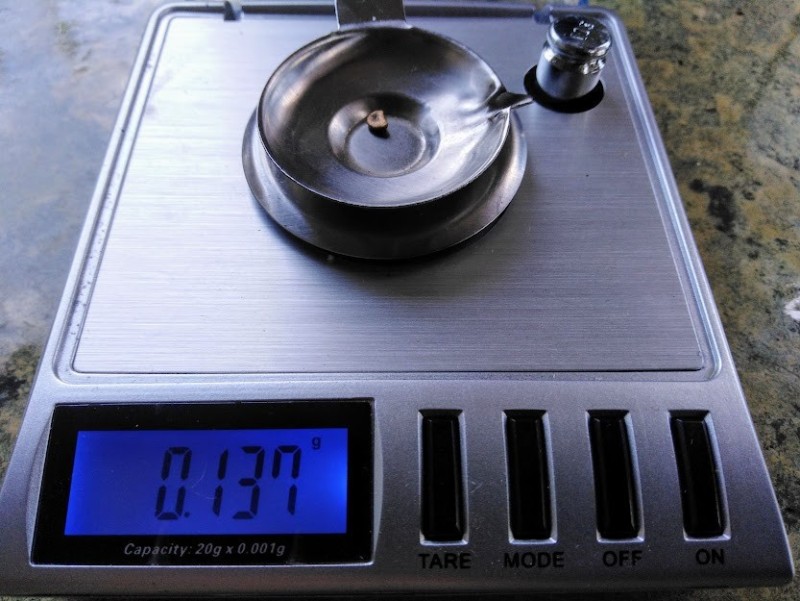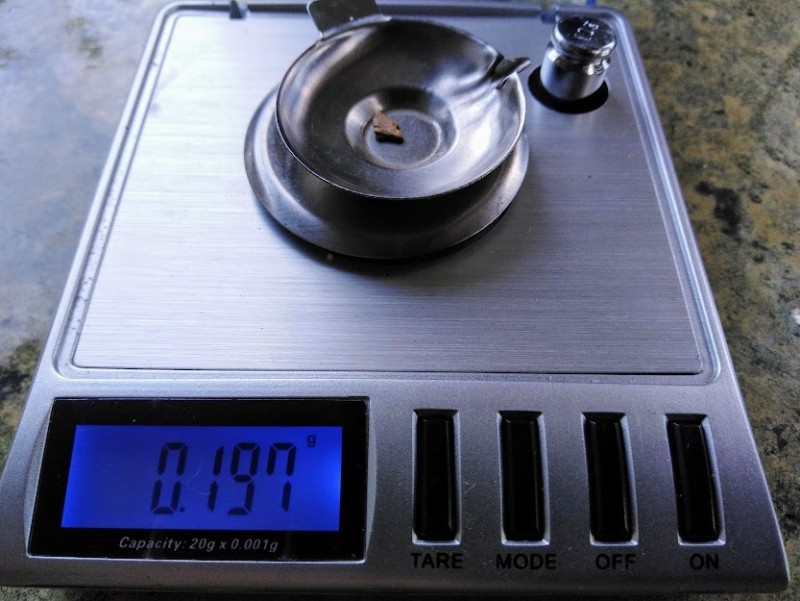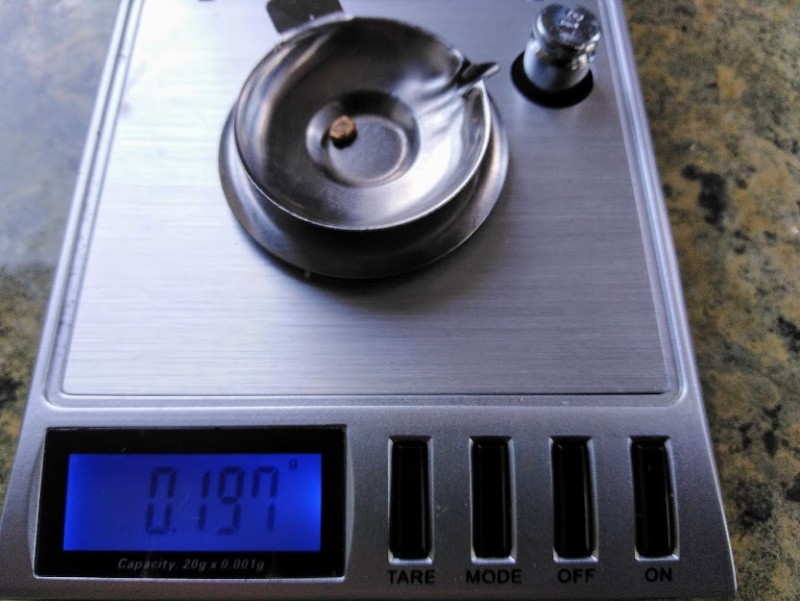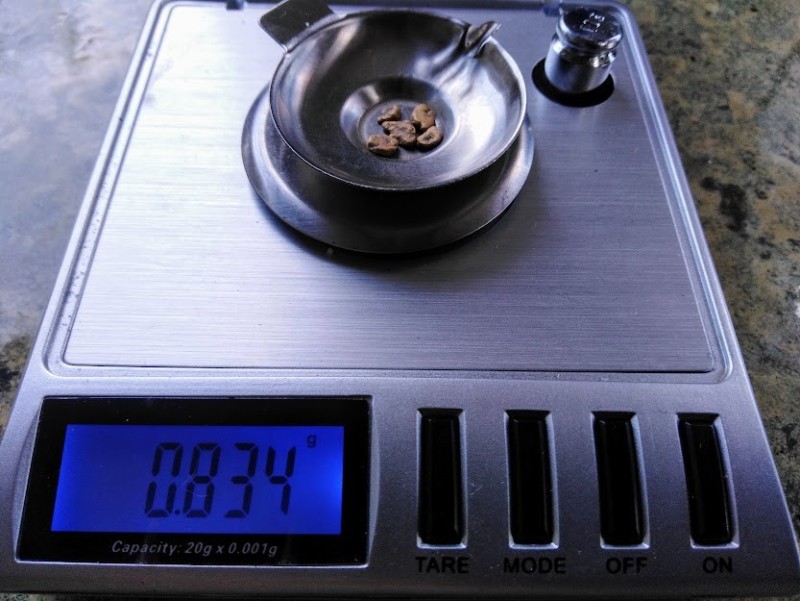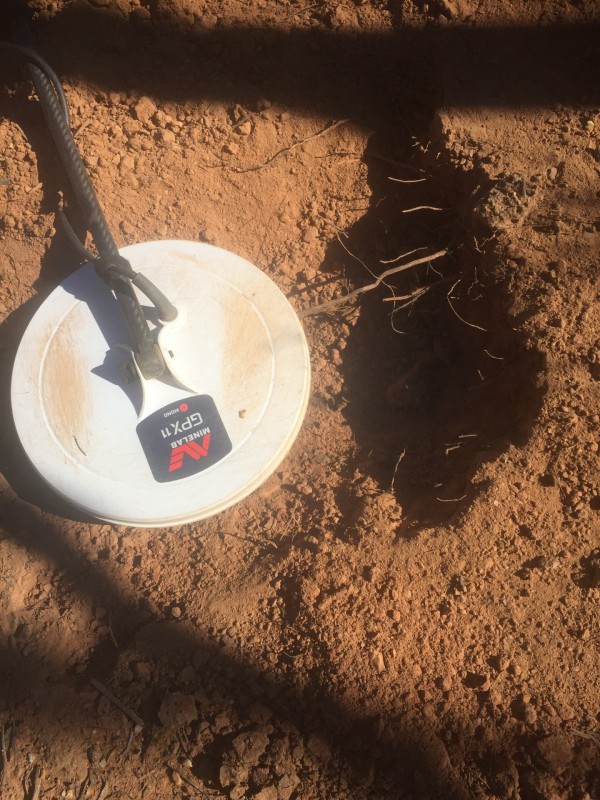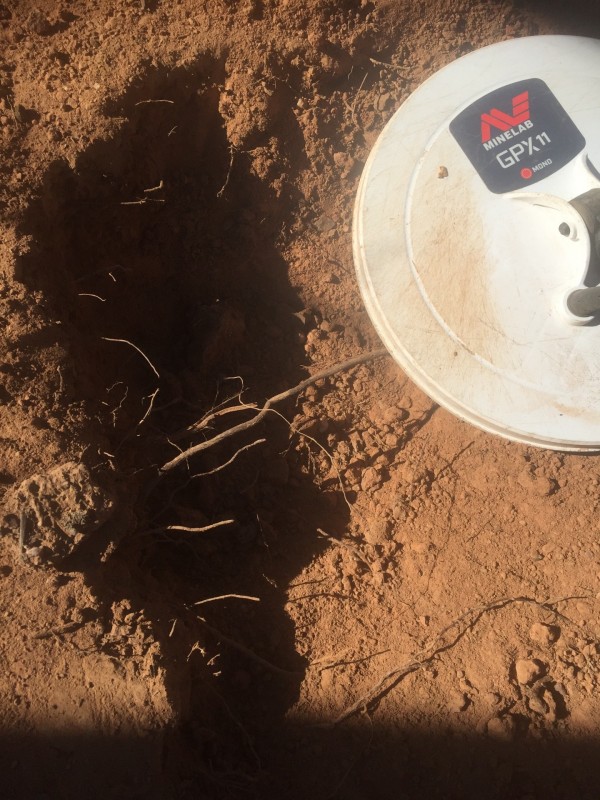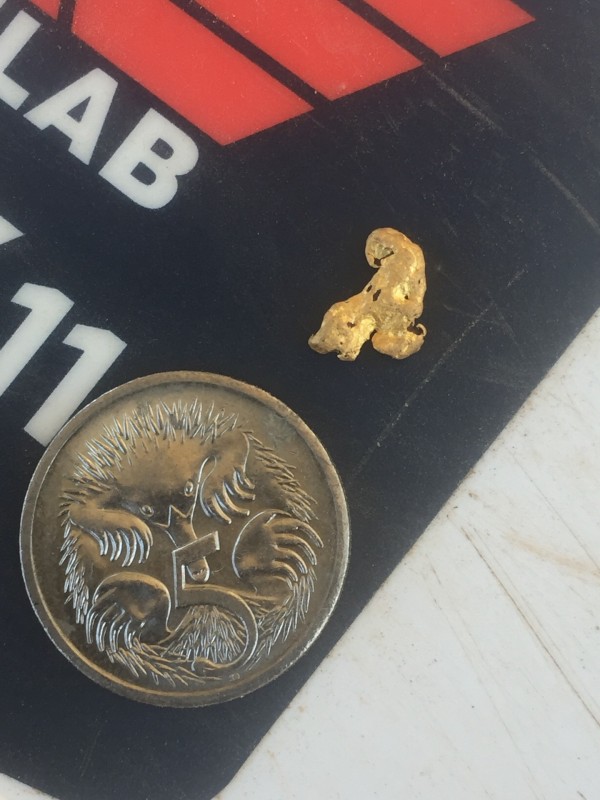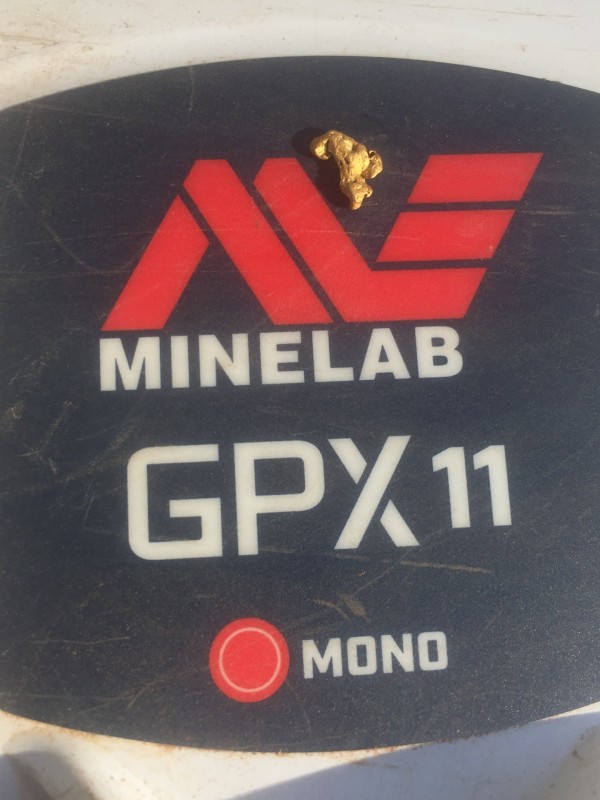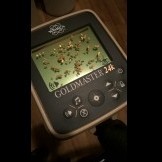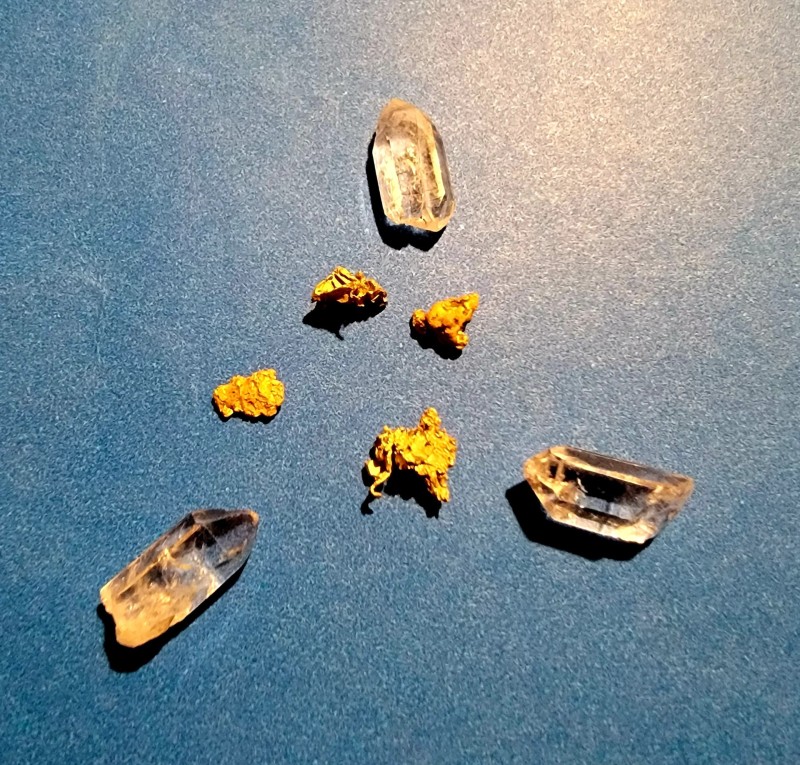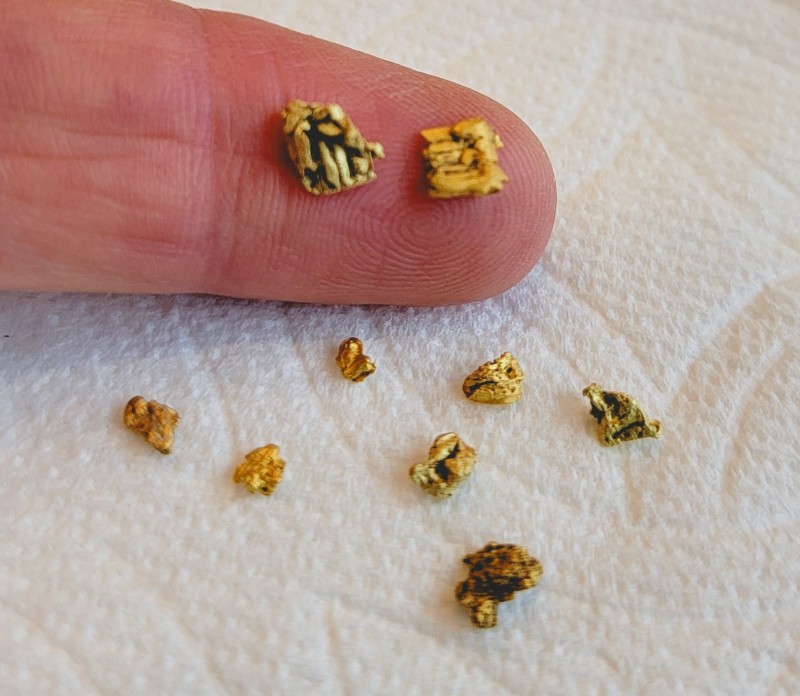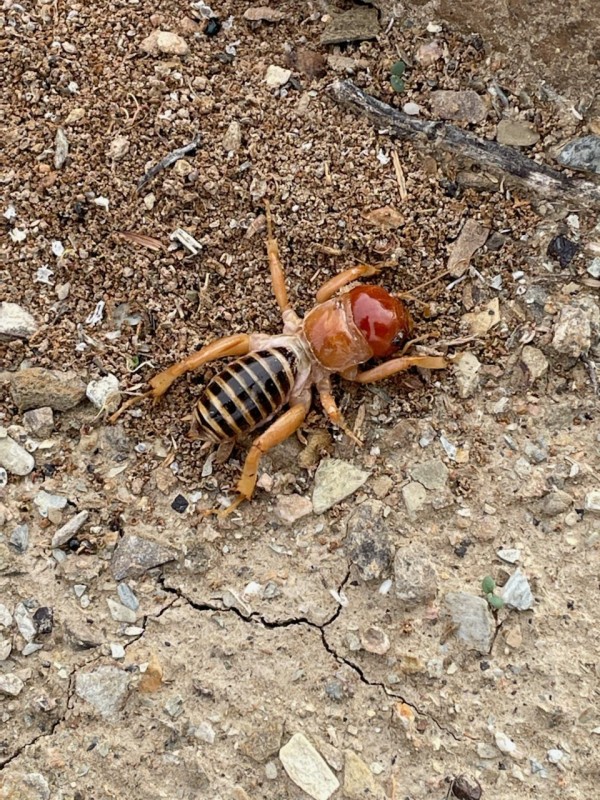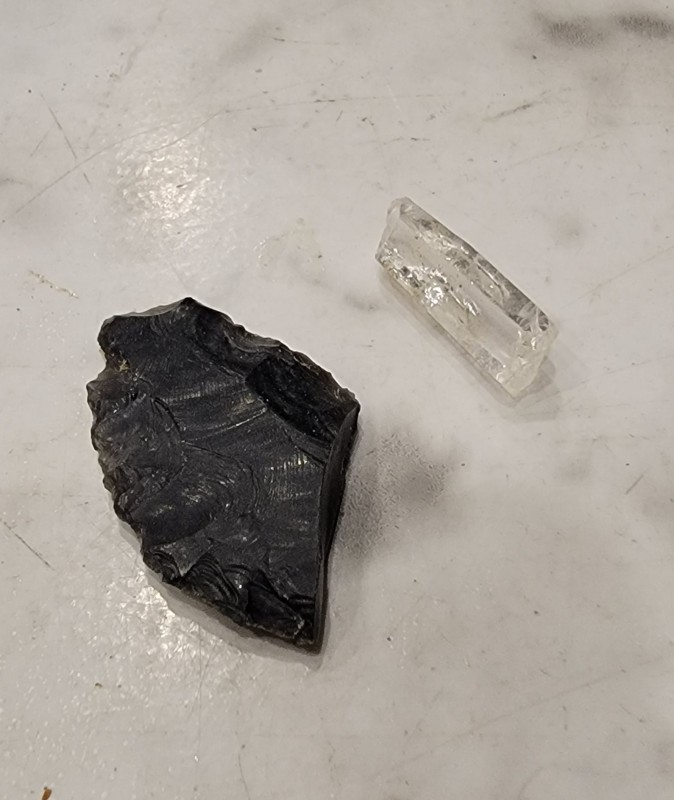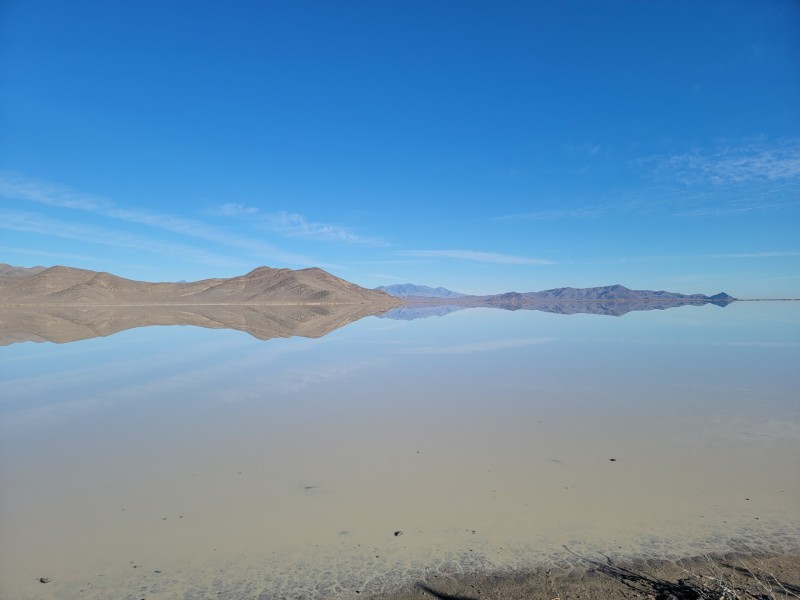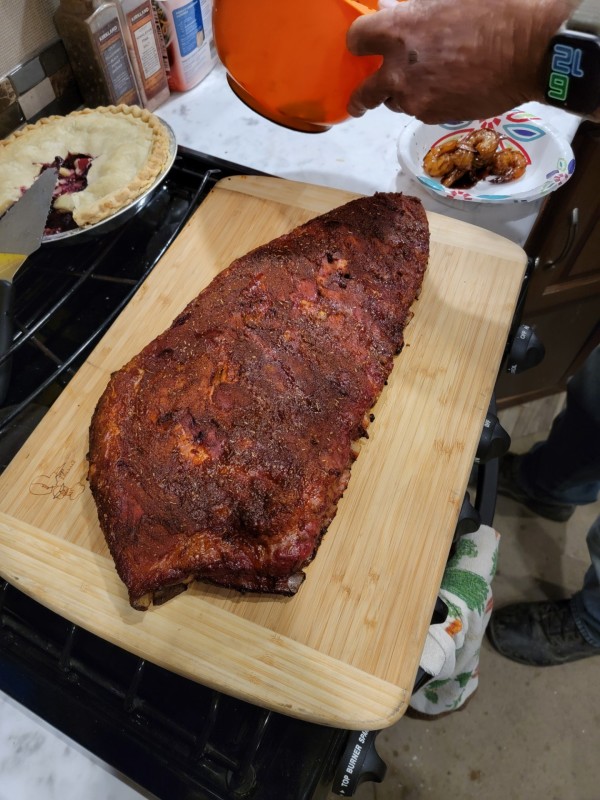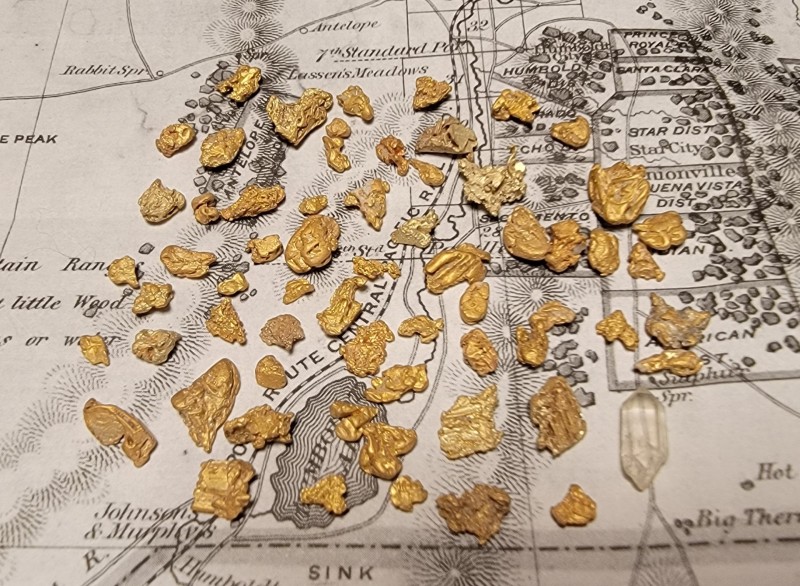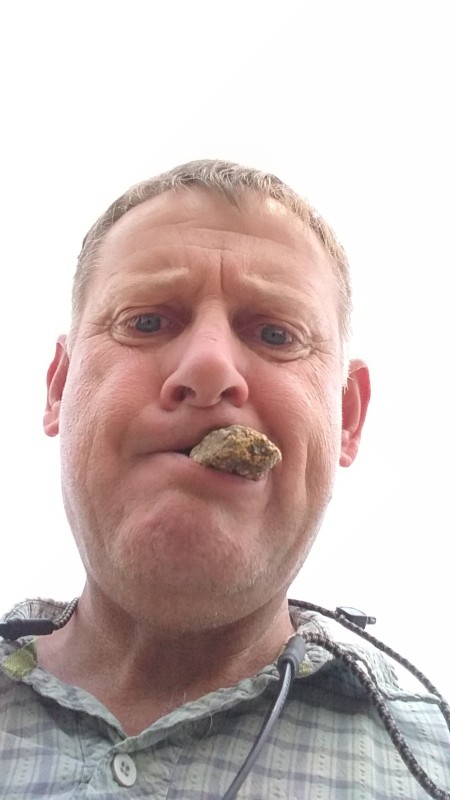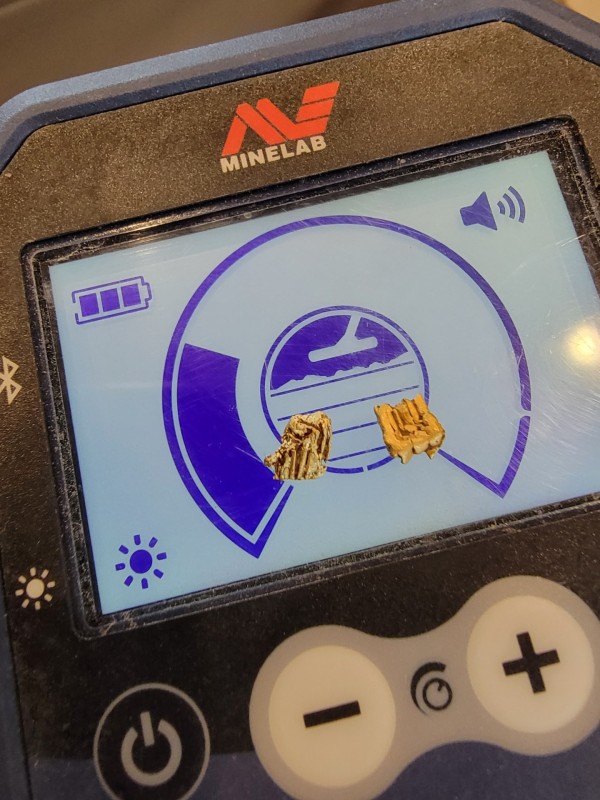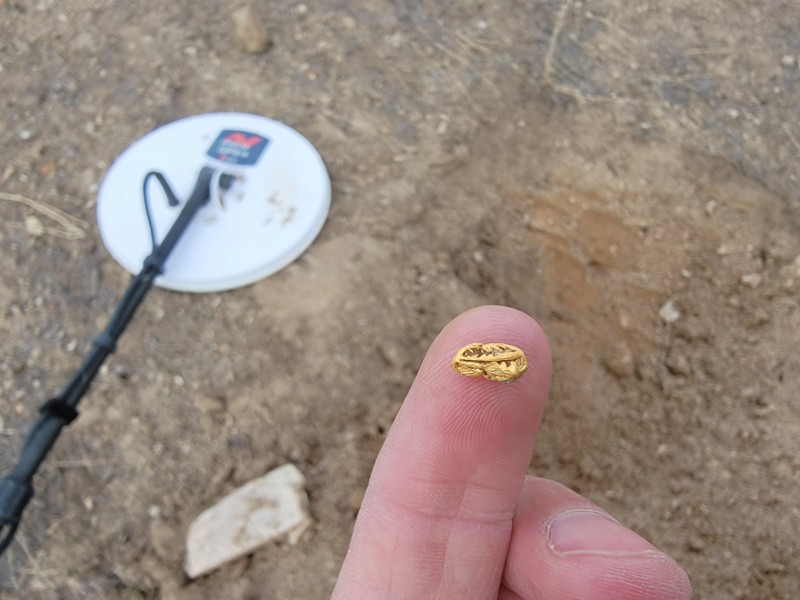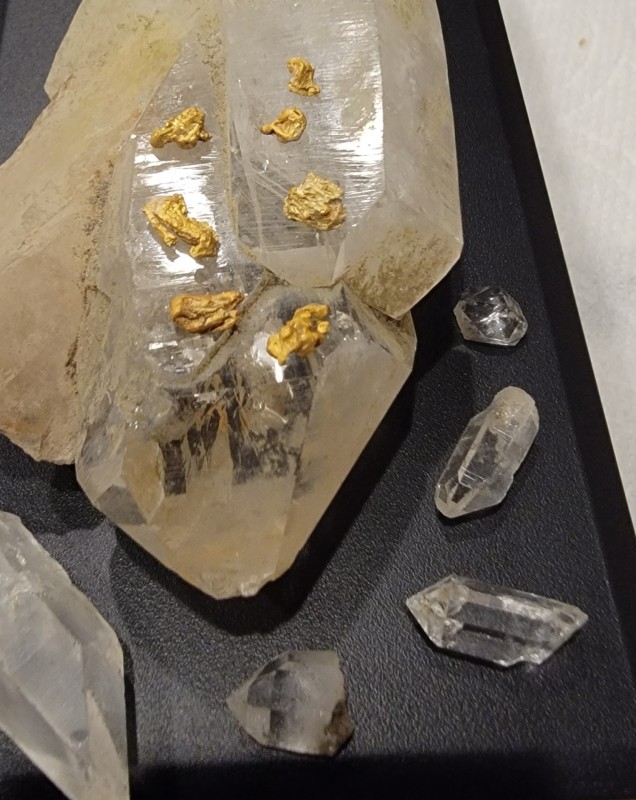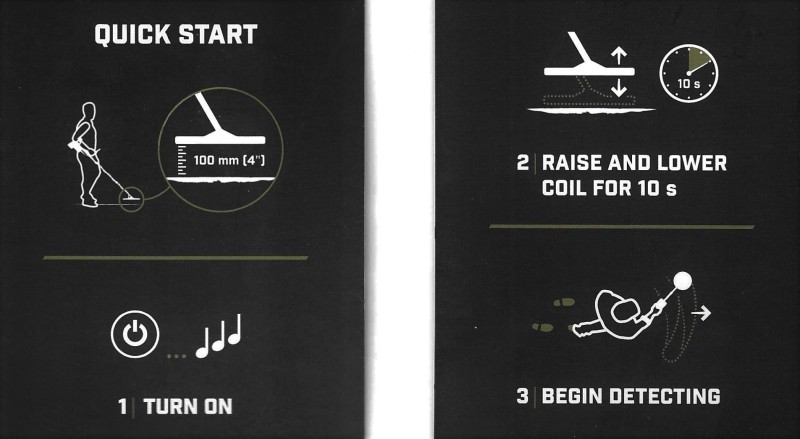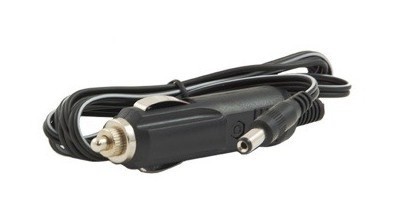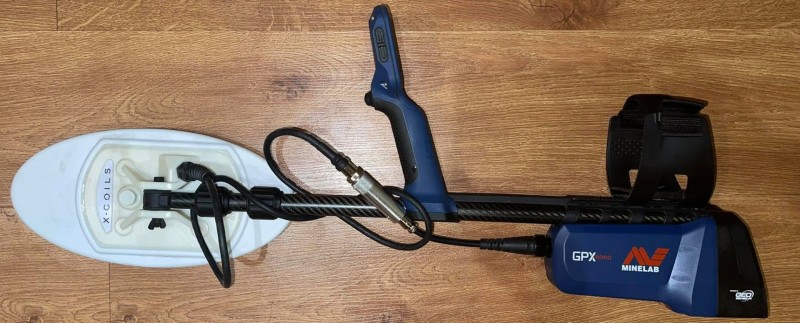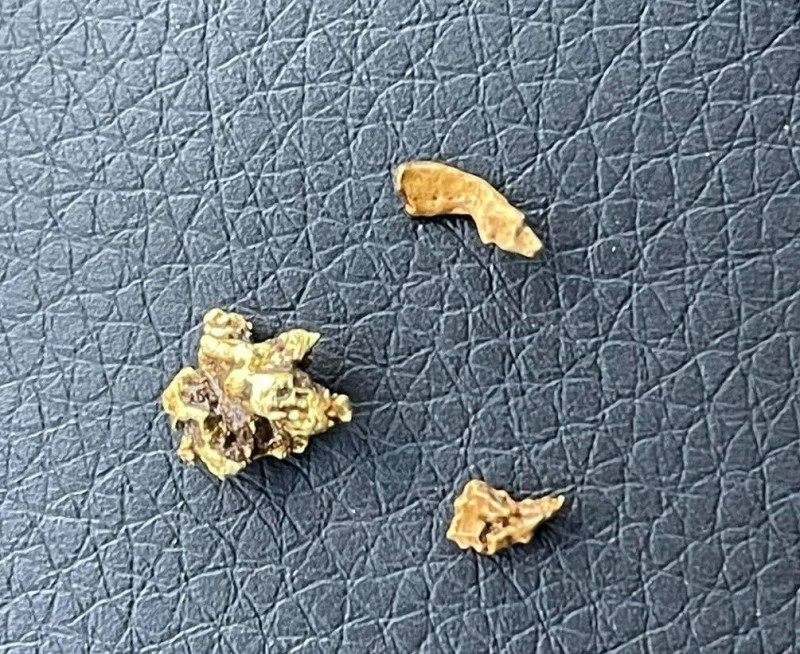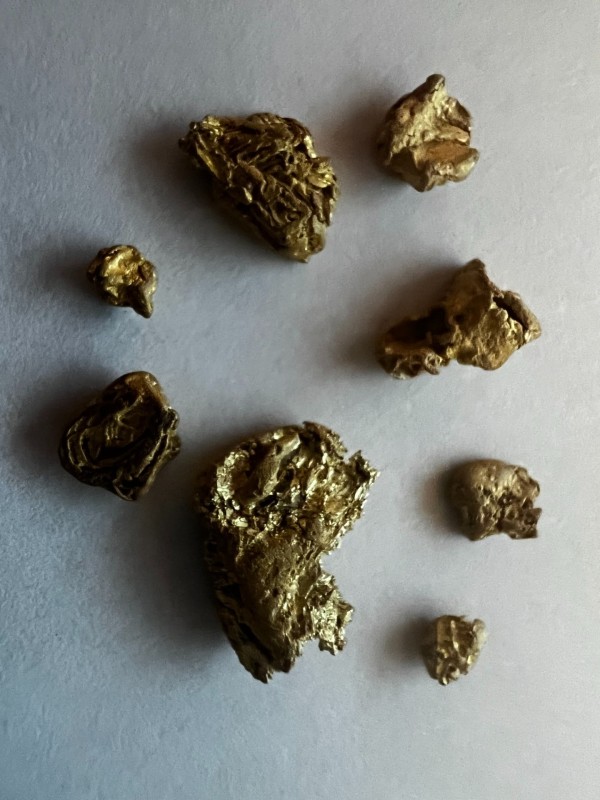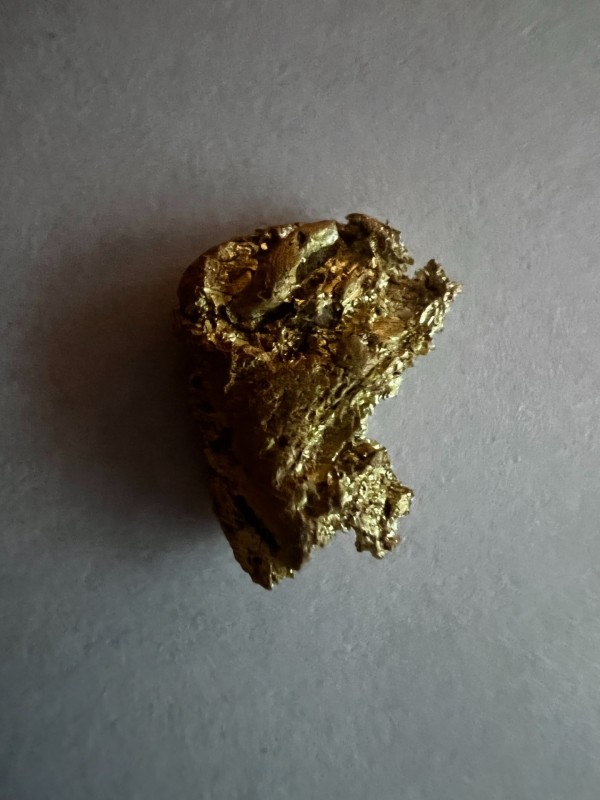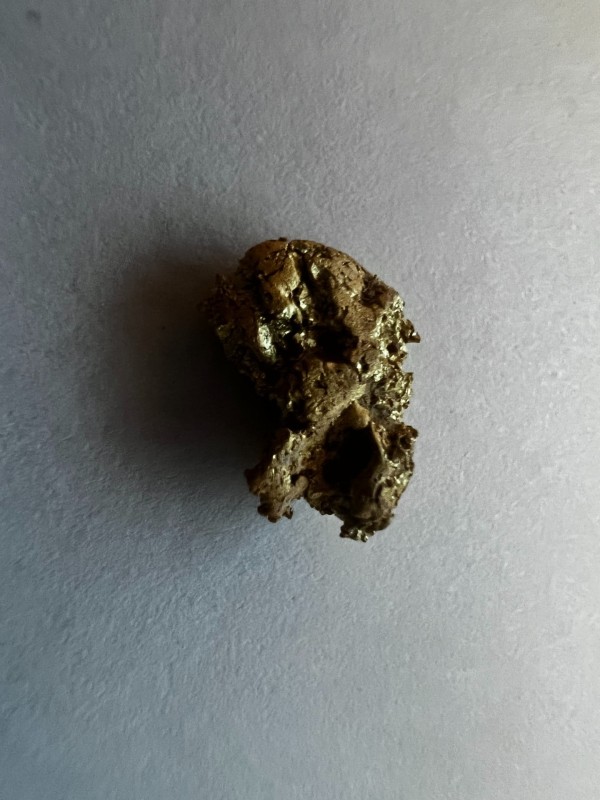Search the Community
Showing results for tags 'minelab gpx'.
-
Well, lucky I was planning to take my GPZ as a backup for this weekends gold hunt, I charged my GPX 6000 I picked up yesterday overnight so it'd be ready for today. The headphones didn't fully charge even though they had about 10 hours they're still flashing red/blue this morning so they're likely duds but the worst part is the GPX doesn't even turn on. I can't be more disappointed, I knew the GPX was rubbish quality, but I didn't quite think the extend of the problem was this bad that both JW's and mine would both be faulty. I almost expected it to develop a fault at some point, I didn't think the first time using it. Good work Minelab! Here is JW's faulty one
-

Relic Hunting With The Minelab GPX 6000
abenson posted a topic in Metal Detecting For Coins & Relics
After some initial testing with the GPX 5000 vs the GPX 6000 last week on some buried relics. I decided to take the GPX 6000 out for a few hours yesterday to one of my permissions that dates to the late 1850's. Based on what I learned from the previous weeks testing I set the 6000 in difficult, threshold off, sensitivity at 4 and used the 11" mono coil. I started out by digging every signal just to confirm my findings from the initial testing and to see where the targets fell in the tone range, high vs low. Most of the wire and nails (whether high or low tones) were identified by the double beep they give, but were dug anyway just to confirm. If you refer back to Steve's original post found here: He discusses where targets fall based on the timing used with the mono coils (this will most likely differ when using the 14" DD). What I dug in the photo below, top of the picture low tone, bottom of the picture high tone. Cutoff off for targets on one end whether high or low appears to be right at the .22 brass range. Shorts are a high tone, longs are a low tone. So this puts small round balls, pewter buttons, all gold coins (except maybe the $20), cuff buttons, coat buttons and bullets in the low tone bucket. On the other end, flat tin, most nails, .22 lead, percussion caps, and other really small brass/lead items as a high tone, this would also include silver coins (except maybe half dimes and trimes) and I would assume belt plates unfortunately. So based on what I found (for my soil conditions) I could setup the GPX 6000 and dig only low tones virtually avoiding most junk targets. One could go one step further and evaluate all the high tones as well and only dig the ones that had the right sound, size and shape and pick up the occasional deep coin, you would also be digging flat tin. So if a person ran over a site with a VLF and picked out all the high conductors (which usually happens anyway) grabbing the silver coins and possible plates. You could then hit it with the 6000 digging only low tones and pretty much clean the rest out avoiding most unwanted items. -
Anyone figured out a good way to make the headphones more insulated to wind noises? I just used them for the first time (I've been toughing it out with the speaker until now, I hate headphones), winds 30-40mph, and it almost wasn't much better than just using the speaker, I could still barely hear the detector through the headphones. It's like they need some earmuffs to go over them to dampen the wind or something.
-
It should be getting obvious the GPX 6000 is a great nugget detector. I think it also has great possibilities for beach detecting for jewelry. If somebody was to ask me about relic detecting, I’d tell them the same thing I say about the GPZ 7000 - way too sensitive to tiny ferrous. There is such a thing as too sensitive, and the fact that the GPX 5000 can be set up to miss the tiniest ferrous is actually an advantage. The 6000 will bang hard on the tiniest slivers of ferrous stuff, like almost invisible bits of hair thin wire. However, it might be something those who already have the machine might want to play with, and I have already been learning a few discrimination tricks while beach detecting. Anyone familiar with the Minelab PI detectors knows you get two main tone responses, either a high tone, or a low tone. The simple way to think of what these tones mean is high tone = small or weaker / low conductive targets, and low tone = large or stronger / high conductive targets. The dividing line between the two is not fixed, but varies with the ground balance setting. This means people in lower mineral ground will not get the same results as those in high mineral ground. It’s a complex subject, one I go into great detail at here. The GPX 6000 has one bit of magic for this task. The Normal/Difficult ground setting button. It allows a change in the tone response by simply pressing a button. I do not know the details of Normal vs Difficult, but it changes the timings enough to flip the tone response on many targets. I found I could use it to get four different target classes. Hi tone normal, high tone difficult = Aluminum foil, misc aluminum, wire, most bottle caps, misc small ferrous - low VDI targets. Small gold. Hi tone normal, low tone difficult = Nickel range targets, larger aluminum. Larger gold. Low tone normal, low tone difficult = Zinc penny range targets. Even larger gold. Low tone normal, high tone difficult = Quarters, dimes, copper penny, high VDI targets, nails (larger ferrous). Silver rings. The results closely mimic my coin detecting results with other ground balancing PI detectors, but with a big difference. With all the other machines I had two classes of targets. High tone small stuff, low conductors, and low tone large stuff, high conductors. This new method delivers four target classes, potentially a big step up in discrimination capability with a PI. Ferrous can show up in any of the ranges, just depends on size and type. By digging the fourth category, it’s basically just high conductive coins, and nails. No zinc pennies or aluminum screw caps. Not good if you have lots of nails, but I will be doing this in a park soon, as many parks are not loaded with nails. Others might be, so it’s site specific. The other big caveat I already mentioned. This assumes bad ground, with a ground balance setting to match. The GPX 6000 is automatic and sets its own ground balance. You have no way to set and lock it, unlike a TDI. So I have no idea where the tone shifts will occur in other ground. The good news is that you really don’t need a PI as much in low mineral ground. This might allow people to get more depth on silver coins in really bad ground. The DD coil also skews results, depending on which mode it is in, salt or cancel. In other words folks, I’m looking for people who are willing to experiment, and document. I will be doing more of this and adding new information here as I go. Any adventurous souls, please do the same. There is a definite crude discrimination system included with the GPX 6000, by way of an easy button push. Let’s figure it out, and it may open up some new detecting possibilities. I blew it on my first go at this, as I dropped finds into different pockets of my pouch, to separate them by category for a photo, along with the trash. Then I got home and by habit just dumped it all in my sieve to sort the sand and trash out - oops. So will do better at that next time. Bottom line is I got real good at calling out the coins before digging. There are some real possibilities here for the adventurous types - PI naysayers need not apply! There are also caveats of course, see the following threads for more details. More information in related threads: Minelab GPX 6000 for Coin & Relic Hunting Relic Hunting with the Minelab GPX 6000?
- 34 replies
-
- 19
-

-

-
- minelab gpx
- relic detecting
-
(and 1 more)
Tagged with:
-
So, my beach season hunting has officially started. I was going to shoot for two days hunting but a wash out on Thursday made me change some plans. I had reserved Thursday for the GPX 6000 and the 14” DD coil, but had to settle for trying the 6000, 5000 and Equinox on Friday. I changed beach locations too and ended up at the less EMI beach for the day. Started out using the GPX 5000 for clearing out some of the recently deposited junk in an area that has produced silver before. I thought the storms that ripped through the previous day would remove some sand, but it was just the opposite…. sand deposited along 3/4 of the beach (top to bottom). Also, high tide reach to the highest point of the beach, so I could only hunt where the waves did not constantly reach up top. The 5000 did well considering the beach was really sanded in and gave me my first silver of the season – a 1955 Washington quarter. The rest was clad, but for 2 copper pennies. Some junk jewelry, and maybe some iron shot or just a ball bearing, - it measured .75 caliber. The big spoon was found at 20” and I thought I was going to get a beer can or some big iron, so that was a nice surprise. Hunted with the 5000 for 6 hours and decided I cleared enough to try the 6000 in that spot. The EMI was a bit more than usual but not really bad. I’m still not sold on that 14” coil. I tried both ground settings, as well as both Salt mode and EMI mode. I tried auto, auto +, manual (full) and manual (setting 1) and some in between. I just could not get the 6000 to not false on the sand. It was partially damp, as high tide receded a while ago, but with a sensitivity of 1, I would have expected a smooth clean machine. IDK maybe the coil is not good. I did not bring the 11” mono as I really wanted to see if the salt mode would work on the 14” DD. Being a bit disappointed, and after trying all combinations of settings, I called it after around 10 minutes. So, the tide was getting as low as it was going to be, so I hunted for 3 hours with the Equinox and traded my spade for my scoop. I didn’t use the Nox much last season as the 5000 was killing the silver, so the Nox sat idle. But I wanted to see if the heavy waves dropped anything on the beach along with all that sand. There weren’t many targets, so I dug everything to get a feel for all the numbers. The hairpins and tiny wire all read a steady -2, -3. The Nox did well for the short time I used it and if I wasn’t beat from the hunt, I would have stayed in the area that was producing some coins. It was the best machine for the day to give me a chance at some gold. It felt really, really good to get out and just walk the beach. Next week all 3 machines will be at the crazy EMI beach. I will have the mono coin and the DD to see if this beach (dry sand) will be ok for the 14” coil. Can’t wait!!!
- 206 replies
-
- 25
-

-

-

-
- coin detecting
- minelab equinox
-
(and 1 more)
Tagged with:
-
So, I went prospecting to mother Yuba (Sierra County), armed with the SDC. I went to a pretty trashy area that I had previously visited with the 6000. The problem with the 6000 in that area was that I had to stop literally every 20 sec to dig a target, mostly tiny pieces of trash. The enormous sensitivity of the 6000 is a god send, but it can come and bite you if you are in trashy areas. Even dialing back sensitivity all the way did not make any difference, as expected. I literally spent most of the time on my knees digging targets, almost thinking I should just remain on my knees and slowly crawl forward to scoop up all the tiny trash. Hence, this time I decided to use the SDC to have a PI detector with comparably lower sensitivity, just to make this a more productive day. Indeed, I was surprised (well not really..) how quiet the same area was with the SDC. Yes, here and there a few trash targets, but not nearly as bad as with the 6000. I could even walk for a few minutes without any target, something that would have been unthinkable with the 6000. I managed to pick up a couple of pickers, something I contribute to the fact that I was actually able to cover some ground, instead of having to stop constantly to dig small trash targets. So, bottom line, the 6000 remains my to go detector and it's performance is simply out of this world. However, there are instances where more sensitivity is not always a good thing. IMHO, this is another reminder of how different circumstances require different approaches and that there is not one single detector that fits all occasions. GC
-
Γεια σας, πιστεύετε ότι υπάρχει τρόπος για το minelab gpx 5000 να μην πετύχει μικρούς στόχους εντοπίζοντας μόνο τους μεγάλους, θα ήταν δυνατό να κατασκευαστεί ένα μεγάλο πηνίο που θα έκανε τη δουλειά; Νομίζω ότι θα ήταν πολύ χρήσιμο για κυνηγούς που αναζητούν βαθιά μεγάλα αντικείμενα σε μέρη όπου υπάρχουν μικρά επιφανειακά συντρίμμια ....
-
I would like to know if I can influence the depth using the RX gain at 17 and the stabilizer at 4. It is very stable for me but I do not know if I am losing depth using the stabilizer so low
-
Does anyone know where I can buy a new quick track button? Mine broke and all I ca. Find is the handle and button together. I ca. Probably fix mine but it would be nice to be able to find a new one. Thanks
-
I was testing my 4500 today on a 2 gram nugget at 7"-8" and a 1 gram at 6"-7". I was able to hear the 2 gram with the gpx with all my coils 6x10 coiltec 14"x9" advantage and 11" dd commander. None of them could hear the 1 gram. Possibly a faint signal with the 6x10 coil. Does this sound about right? The soil is not too mineralized I was able to run the dd at 13 with no ground noise and the monos at 11 or 12. Also I have been detecting a new area lately and have found 9 nuggets from .6g to 2g. Picture below. The smallest was hiding under a bullet so doesn't count as a gpx find. Using the gpx. All of them were within 4"-5" from the coil in bedrock areas. I know there must be some under the areas of shallow gravel but I can't seem to find any there. I'm getting ground noise and false signals only. Thanks
-
Does the GPX 6000 signal on small near surface iron? I want to test it at colonial and civil war sites to relic hunt. If it does what sort of signal sound does it produce? Thanks
-
On Sunday JW and I went back to one of our old detecting spots, it's the place I've been to the most and have detected it with various detectors all the way back to my GPX 4500 and Gold Monster and JW goes much further back than that with his detectors. It seems no matter how hard I try there is always more gold to be found in this spot, especially when new detectors or coils are involved. The place is heavily covered in shotgun pellets and unless you've got extreme patience you're going to miss some tiny gold by ignoring the small surface pellets which means you'll likely ignore the smaller surface bits of gold also. I used to dig and recover everything that beeped but I've lost patience for that in this spot, remarkably JW did just that on this day, he had a good handful of pellets where as by rejecting everything that moved in the first couple of pick scrapes I only ended up with about 10 pellets all day, I certainly detected a hundred or more though. It's good going detecting with JW, you can't buy experience and he has a lot of it so I always end up learning quite a bit on days detecting with him, he's a wealth of knowledge on the local areas. As I was seeing the GPX 6000 for the first time I took along my little test sticks that Geotech sent me for testing my QED on shotgun pellets to compare the result to other coils and detectors. I only bothered with the #9 and #6 lead shot as they especially the #9 are the most difficult for detectors to pick up. So JW turned on his GPX with the 11" Mono coil and we went to see how it responds on those pellets, it wasn't meant as a scientific test I just wanted to get an idea of how the GPX compares to the 12" CC and obviously other coils I'm using. Unfortunately the GPX was a bit unstable when first turned on, JW has been normally using headphones with it and not the speaker but we needed to use the speaker so we could both hear the response. A few retunes and me turning my phone off helped a bit but it wasn't overly stable, we pressed on and tested anyway in manual and auto+ and the results were somewhat of a surprise to me and not what I was expecting. Unfortunately the little #9 pellet fell off the stick into grass somewhere in the area as I was walking around so not as much testing was done as I would have liked to have done. I guess I'd hyped the GPX 6000 up in my head to be much better than it ended up being by comparison to what I've got and I guess I did this due to all the talk of Gold Monster type sensitivity with it, there is no chance its as sensitive on tiny gold as a GM, it is however like a supercharged GM once the gold is a bit bigger. I'm pretty confident with my current setup and coils along with the fact I can run in HY/Normal with a high gain and not be troubled by EMI so I'm really not missing much, if anything at all so I'm quite glad I didn't let my excitement of a new product make me jump onboard with a GPX prior to at least seeing one in action. I really don't think I need one now so that saves me some money, the light weight was fantastic though, it felt like a VLF in weight, although it seemed to me build strength has suffered a bit because of the weight, it's lost that solid feel of the GPZ. It's not that I don't like the GPX, I thought it was fantastic, I just don't see the cost / benefit ratio adding up at all. In saying all of that the difference for someone in hotter soils could be very different, the GPZ performance in difficult on small gold as is not near the performance it has in normal so the 6000 may well shine then, the difference in mild soils is less telling especially with the coils I have to use on my 7000. I'll wait and see what future coils add to the 6000 and revisit the idea of getting one then if necessary, I am sure JW will want to get his hands on the 10x6" X-coil once it's released. We decided enough messing around and started detecting, I just turned on the detector right where we dumped our backpacks and started detecting there, I figured I may even find the missing #9 pellet, and it was not even a couple of minutes and I had a target, it survived a couple of pick scrapes so I was confident it was less likely to be pellet and started to get a bit excited, surely not, gold already? It did turn out to be a little nugget. My photography skills let me down, it's sitting o nthe coil above the O in X-coils 🙂 I went over and saw JW and showed him the nugget, he was about 50 meters away I guess, we were both surprised I got one already, especially with how often we have detected this spot. He was in the middle of recovering a shotgun pellet at the time with the 11" Coil still on. I went back to the spot and detecting around it hoping there might be another one, and there was! This time I was more prepared as once I was confident it wasn't a surface pellet I turned on the video on my phone to capture it. I'm no Hollywood producer, so you'll have to put up with my rudimentary video skills, I didn't do any editing just stitched a couple of parts together to make it a single video. I'm pretty sure this is the photo to match the video 🙂 and the nugget. I kept detecting around the little area and had a 3rd target, this is getting weird, I just don't understand how we both have missed these in the past, that's gold prospecting for you. As I was again confident I had a nugget I also filmed this one. This was the one I think, hopefully the photos match up to the video, it's hard to tell as all the gold bits look similar size 🙂 This is the area my first 3 pieces came from, the hole in the front of the photo is the second piece I found, the pick is where the 3rd piece was and the second bit was behind that rose bush between where the pick is and the big rock. They're all sort of running down hill from each other. At the end of this video I looked up and showed the dirty great big high voltage transmission lines above us, these seemed to act up a bit on the GPX where as I was completely immune to them with the GPZ, JW had all three GPX coils with him to try them out at this spot, he'd never even used the 17" or 14" DD before and the 17" felt a bit heavy without a harness which he didn't have with him and also acted up more with the EMI. After the morning part of the day and him sifting through a handful of shotgun pellets and finding 3 little bits of gold he decided he'd give the 14" DD a go after lunch. He was very dedicated, digging so many pellets to get his bits of gold where as I was ignoring all these little surface to a couple of inch type targets aiming instead for deeper targets, I wasn't hunting the bedrock instead going for the grassy deeper soil areas. We were discussing the depth advantage these Concentric coils give us so I wanted to stay off bedrock and hunt the deeper ground hoping to find something. We were now on 3 nuggets each and decided we'd have some lunch. Once the DD was on his GPX is really quietened down, it ran really nice, the performance on small gold seemed good too, and we were able to detect near each other without the GPX being bothered by it, the GPZ is no issue, especially with the Concentic coils. I'd just found my next piece of gold and walked over to JW who was now able to detect quite close to me and he was digging a target, his first deeper bit of the day and it was with the DD, a similar size to my pieces, it was good to watch the recovery. You'll see someones quite substantial dig hole just below my smaller dig hole where my coil is sitting, this was my next nugget. My smallest bit of the day, a reasonable depth too, and the target really stood out, unmistakable. Whoever dug the hole below it missed this one. Hard to see the dig hole in the photo. Here is a photo of the power lines, it's a shame they look a lot further away in the photo than they really are. It's only a short walk up to them, I once found a piece of gold right under them with my Gold Monster, I've not taken any of the Concentric coils up under them but I should, it handles other power lines fine and I may find gold others have missed with detectors that struggle more under them. Things were starting to dry up for both of us now, we had 4 nuggets each at this stage so we stopped for a drink and snack and decided we would walk over a little gully into an area I haven't detected as much, I'd been over there with my Equinox some time ago, I don't recall finding anything except a zillion pellets. As I was largely ignoring shallow targets I was likely missing some small gold but I wasn't worried about that, it was too hot to recover so many targets when almost all of them would be pellets, I admired JW's determination doing that, his pellet collection was getting huge. I then had a quite shallow target, but it was not a pellet, I thought it might be a boot tack as it was a loud booming signal. I figured I'd recover it as you never know, at least it's not going to be a pellet. The hole was quite shallow, and it turned out to be a bit of gold, glad I dug that one. It really screamed too. Around a similar time JW had found his 5th nugget too, we were neck and neck all day, once one was ahead the other caught up, the challenge of keeping up with JW on gold finds works as a good motivator to me, the little competition is pretty fun but I rarely could keep up with him, this time I managed to. Anyway, here are the weights of mine This is the second last nugget I found, the smallest one of the day which is no surprise as I was avoiding shallow targets on purpose, it was the one that had someone elses dig hole just below it. This is quite funny, two the exact same weight, vastly different looking nuggets though. and my total, almost a gram! And here are JW's nuggets, mostly smaller than mine with him targeting those surface targets but it's hard to tell in the photo, we checked his smallest one on my coil and I was able to get it. We just put all his nuggets on the DD coil, 3 of them were found with the 11" Mono. The biggest one was with the DD. So all in all a fun day out, and we both managed to get some nuggets in a place that we didn't expect to really get anything much if at all so can't complain about that. These last two photos are just some shots of the area we were detecting, the grass is quite an annoyance but smaller coils handle it fine, I just use the GPZ to squish it down as I run over it, JW has a bit of trouble with the shaft twisting on the GPX doing that sort of thing.
- 51 replies
-
- 40
-

-

-
- gold found
- minelab gpx
-
(and 1 more)
Tagged with:
-
I have come to the conclusion that Minelab has discovered alchemy with the GPX6000. It is the only logical conclusion as to why I find gold everytime I go out with it. It must have something to do with all the calculations of the onboard computers and the frequencies of the the pulses into the soil. Maybe a modified flux capacitor is hiding in there. 😆 Maybe Steve Herschbach has some info on this?? 🤔
-
Hello All, The new Minelab 17" Elliptical Searchcoils for the Minelab GPX 6000 have been flying off the shelves, definitely high demand. Due to the high demand, I haven't had much time to use one, everyone ends of taking mine ... LOL I haven't seen much larger gold being found at depth yet, but I'm sure it is. Curious how people and past customers are doing with this new 17" Searchcoil beyond covering more ground quicker? We still have a few left in stock from the last large shipment and more on the way if anyone is still searching for a new "Christmas present.!" Hahaha Would love to see some pictures or at least hear about any success with the new searchcoil. Wishing you all much success on the goldfield. 17" Searchcoil available here - https://www.robsdetectors.com/minelab-gpx-6000-17-searchcoil/ Rob
-
Do you think that the GPX6000 should have been classified as a GPX? Steve mentions in his review that it was "like" the SDC he always wanted. So maybe this should have been called the SD6000 (gotta keep the price in the name 🤣) Or maybe this should be the GS6000 for Geo Sense, a new line of detectors. I do not know the the history of the SD vs GP vs GPX in technology but I think Minelab might have gotten a better response if they named it different and showed it off as a "different new" detector vs an upgrade in the GPX lineup. Unless of course it really does belong in the GPX line up. I have never used a GPX so I am just guessing here, I started detecting when the SDC came out, my first detector. Would love to hear some philosophical technical input here.
-
-
Well my staff/I just finished the season and wrap up of field training for 2021 and our customers...and boy did it go out with a bang and big belly's thanks to Chef Rusty Bucket. Smoked ribs, Bourbon shrimp in garlic sauce, berry pie and ice cream, smoked Brisket, bacon wrapped stuffed jalapenos and more. Wish I would have taken more pics of the food. As I have said before, the food/drinks/people are part of why I enjoy these trips, as I know the gold will eventually come. As many know, Gerry’s Detectors has been training out there at the burn barrel with a few different staff members since the 90’s. We have been using just about every model of gold detector from the top manufactures as well as coils to see what the best results are. The comparisons of customers detectors continue to see the improvements of technologies and capabilities which is what we want. Yes there are times a more expensive detector may not produce the best signal response on that particular targets, but it’s what it is and part of learning. Some of what we found most amazing and it’s exactly what I expected would happen during the training at RP. The gold nuggets being found during the 3 days of class was the most of any session in at least 5+ yrs. More people went home with actual Rye Patch gold than what my staff/I have witnessed in quite a long time. The knowledge shared was the same stuff we always go over, but the knowledge retained was higher. The class size is usually around the same, but the amount of golden smiles of success was better than many yrs prior. We know the VLF detectors when fit with small coils are going to find a few pickers, but to see the bigger PI machines perform so well and produce such higher %’s of beautiful NV gold was most impressive. So lets go over it again to see what my Staff/I observed, in no particular order. Knowledge of customers detectors was actually retained, smiles of happy customers making the right choice of detectors, the amount of successful customers who went home with gold and the overall numbers of gold nuggets dug by the students. There is one thing that I corollate all these positives and it’s the new GPX-6000, period. Yes we had SDC-2300’s, GPZ-7000, GPX-5000’s and the usual VLF’s in the class being learned by the students and those who were there with the GPX-6000 had the most Success. But the success of gold nugget finds was just part of the fun. Ease of operation and simplicity we’ve never seen from a PI Minelab was also most impressive. The customers were actually not afraid of their detectors. They didn’t worry if the timing and or sequence of adjustments was correct, as the GPX-6000 is pretty much a turn on and go. The old way, a big multi page instruction manual (is missing) and now we get a 3 step Quick Start…and it’s true. 1) Turn On. 2) Raise/Lower Coil for 10s, 3) Begin Detecting. Are you kidding me, no way that can’t be true. We just paid $6000 for one of the latest technology fine tuned gold detectors in the world and all we get in the box to help learn, is 3 short steps with a combined total of 10 words? Well folks, it’s all true and so is the amount of happy customers who invested in our training and the new GPX-6000. If anyone thinks there was some other reason for the above, please chime in as all indicators are bulls eyed at the GPX-6000. Overall the trip went exceptionally well consider the 100 yr rain storm that came through while we were down there. I still love the natural beauty of Northern NV in the fall and the colors on the gold nuggets we dug. Hopefully the Spring/Summer class will be just as productive with a group of new enthusiastic customers and more gold being unearthed.
-
Each time I try and ground balance my 6000 there is no detectable change. While holding the GB button I pump the coil then move it side to side. It’s like it don’t work. I friend of mine says his does not either. What am I missing? I run in manual mode with the threshold on. The noise cancel works very well.
-
This is from Steve’s GPX 6000 accessories page. The following items do not come with the GPX 6000, but are likely to work with it based on what is known so far. This is preliminary guesswork, and it is not advised a purchase be made based solely on the information presented here. https://parts.minelab.com/0302-0082-p/0302-0082.htm
-
How many hours run time are most of you guys getting on a set of gpx 6000 batteries 7.5 for me with no back light
-
X-coils For The GPX 6000 - Information Repository
phrunt posted a topic in Detector Prospector Forum
I was pretty excited about this one so I couldn't resist posting the video of it, it's a 12x6" prototype test coil being used on the GPX 6000 to find gold, it found 3 bits on it's first run. This was one of my favourite coils on the older model GPX and if I end up with the new GPX it will be a size I'd have to have. It's long sensitive nose was great getting up between the rocks I regularly hunt in. This is purely for information for those interested in following the progress of the coils. These coils are not being sold by them yet, it's in a testing stage and they will require an adapter which involves removing a chip from the original coil. You'll see in the photo the adapter inline on the coil cable which has the chip in it that was removed from the standard mono coil. And the video The 3 bits of gold found while testing it. The one to the left was the one found in the video. -
I purchased the GPX 6000 from @Gerry in Idaho a few months back and had only taken it out once for about 45 minutes and had to put it away because it was screaming at me due to iron scattered everywhere. Fast forward to this past weekend, I went down to Rye Patch to @Gerry in Idaho's training to really get out and try this thing out. I ended the trip with 8 pieces totaling 3.7 grams, cleaned. The biggest piece was pretty cool so I am including pictures of both sides of that one, 1.5 grams cleaned. All 8 were found right around the burn barrel area. Thank you to Gerry and all of his staff for a great time and knowledge! @Lunk @afreakofnature and the rest of the team.



